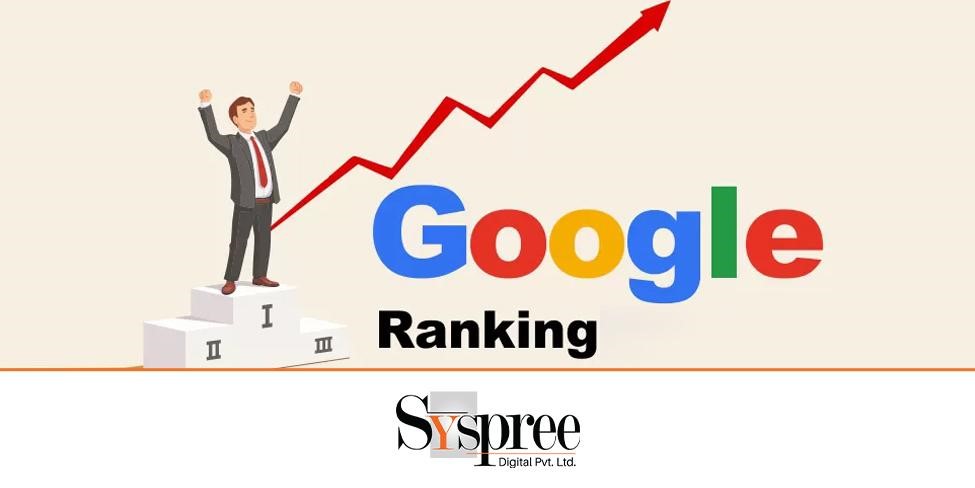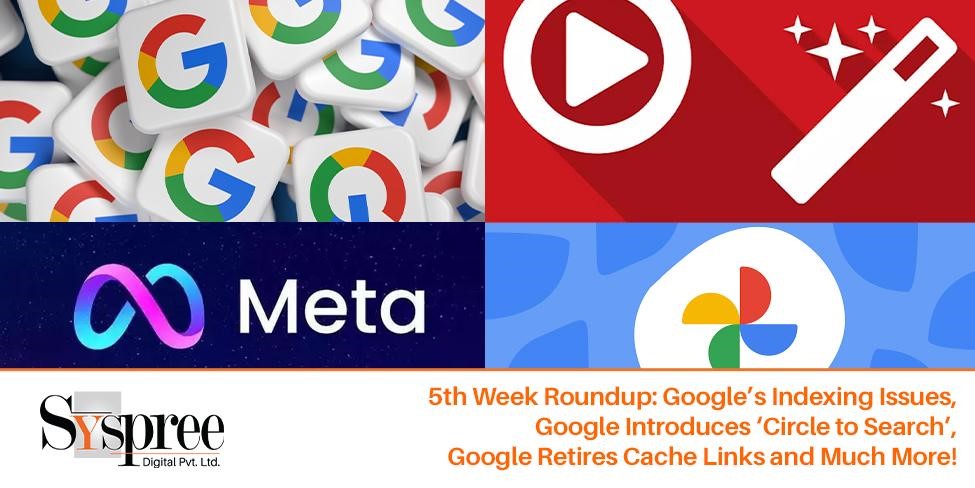This digital news roundup will guide you through the most recent developments in the online world. Explore the evolving strategies to respond to dynamic changes on major platforms, from Google’s indexing issues to shifting web vital metrics to enhanced ad capability.
Google Acknowledges Indexing Issues, Leaving Websites in Limbo
Google confirmed that a problem with indexing has been affecting certain websites since Monday night. The company is investigating the problem to determine and resolve its root cause. Google acknowledged this problem in a morning update on Thursday, saying that “a small number of sites” might experience slower indexing. These issues began around 11:30 pm ET on January 31 and have caused concern among news organizations, website publishers, and content creators.
Many people have complained about difficulties getting their newly published content to be indexed by Google and appear in search results. The leading SEO company in Mumbai says that Google has assured that only a small subset of websites are affected. However, the delay in indexing for publishers relying on timely indexing to drive traffic and revenue via Search has been frustrating. Google has been working on a solution, but no details have yet been released.
Read more: https://www.searchenginejournal.com/google-confirms-indexing-issue-affecting-some-websites/507018/
Google Introduces Interaction to Next Paint Metric, Replacing First Input Delay in Core Web Vitals
Google will replace the First Input Delay metric (FID) with the new Interaction to Next Paint metric (INP) as a Core Web vital on March 12. INP is a metric that measures the time between a user’s interaction on a page and when the browser renders any changed pixels. It aims to provide a better assessment of interactivity than FID. FID, part of Google’s Web Vitals initiative in 2018, was introduced but found limited in its ability to evaluate interactivity.
INP, which was introduced in May 2022 as an experimental metric, will replace FID officially in March. This could significantly impact web development, search engine rankings, and even user engagement. Google provides optimization suggestions to developers who want to ensure their website meets the “good” threshold for INP.
Google’s Explanation of Syndicated Content Ranking Signals and Link-Building Tactics

5th Week Roundup – Google’s Explanation of Syndicated Content Rankings
Google’s John Mueller responded to a Twitter question by Lily Ray regarding concerns over syndicated content and its impact on rankings signals. Discussions revolve around the March 12th replacement of the First Input Delay with the new Interaction To Next Paint as Core Web Vital. Mueller clarified that Google’s ranking system will reward pages recognized as canonical by Google. Google has also advised against the use of cross-domain canonicals for syndicated content. Meta tags are suggested to prevent indexing by partner sites.
The experts from the best SEO company in Mumbai say that Google’s SearchLiaison clarified this further on Twitter by highlighting the importance of adding a ‘no index’ tag to syndicated content for original publishers concerned about ranking signals. Discussions about using content syndication and link signals to gain links have been raised. Google has taken a stand to stop the transmission of signals from syndication partners to original publishers.
Google Introduces ‘Circle to Search’: A Gesture-Based Search Feature for Mobile Users
Google’s latest search feature, “Circle to Search,” is designed to improve the mobile experience using intuitive gestures. This feature is initially available on Pixel 8, 8 Pro, and Samsung Galaxy S24 phones. It allows users to look up information without switching apps or typing queries quickly. Google has outlined five key functions that can be accessed by long-pressing on the home button, circling an item, or scribbling it.
This includes shopping for products seen online, searching for definitions, getting travel inspiration, comparing choices, and asking complicated questions. Circle to Search uses AI to answer broader questions and provide mobile users with a streamlined and interactive experience.
Google’s John Mueller Advises Patience for URL Changes on Larger Sites

5th Week Roundup – Google’s John Muller Advises Patience for URL Changes on Larger Sites
John Mueller, a Google employee, has revealed the length of time that it takes Google to process large-scale website changes. He also highlights the complexity. Mueller responded to a Reddit question regarding sitewide alterations by discussing the challenges involved in implementing changes, especially regarding hreflang for multilingual websites. He noted that updating URLs can be time-consuming and suggested using stable URLs to improve SEO.
Mueller’s insight aligns with his statements from 2021 and highlights the time Google needs to assess a website’s relevance and quality. He referred to the complex process of understanding the context of a website within the wider web. This sentiment is similar to a discussion in a research document on recalculating the semantic meanings when updating web pages. Mueller also stressed the long-term cost of complexity and encouraged website owners to simplify setups for easy maintenance.
Google Enhances Bard Chatbot with Image Creation and Improved AI Models
The best SEO company says that Google has upgraded its AI generative tools, notably the Bard bot, by incorporating advanced AI models for better understanding and reasoning. It also improved coding capabilities. Bard’s capabilities are enhanced by integrating Gemini Pro, which is now available in over 40 languages and over 230 countries. Bard gains image creation capabilities powered by Imagen – Google’s AI system for image generation. Google also introduced Imagen 2 – the next generation of its visual creation software- delivering more nuanced and detailed images.
SynthID is a tool created by Google DeepMind to add a digital watermark that can be used for identification but remains invisible to the human eye. This will help address any concerns regarding misuse. This approach aligns with Google’s commitment to responsible AI deployment within the changing landscape of generative AI.
Meta Introduces ‘Engaged View’ Attribution for Enhanced Video Ad Performance Measurement
Meta has launched a new measurement of video ad performance, called “Engaged view,” to give advertisers a better understanding of the user’s response. This option takes into account delayed responses, such as visiting a site in a later session after watching at least 10 seconds (or 97%) of a video advertisement. Advertisers are now able to measure conversions that occur within one day after the video ad is played.
If, for example, Sharon watches a video advertisement for an on-demand yoga class and signs up the next day, that will be considered an engaged view conversion. Meta provides advertisers with detailed response reporting to help them better understand conversions and optimize video ad campaign strategies.
Read more: https://www.socialmediatoday.com/news/meta-launches-engaged-view-attribution-option/706197/
YouTube Enhances Creator Tools with Playlist Analytics and Content Gap Insights

5th Week Roundup – YouTube Enhances Creator Tools with Playlist Analytics and Content Gap
YouTube Studio has been updated with new analytics tools and features to help creators manage their content more effectively. Creators now have access to Playlist Analytics, which allows them to compare the performance of playlists side-by-side and gain insight into viewer behavior. Creators can now assess the engagement impact of grouping playlists. YouTube also introduces Content Gap insights under the “Research tab” on the desktop. These insights highlight queries about a particular channel that the app doesn’t address adequately.
This feature helps creators identify new topics that align with search intent. YouTube also facilitates cross-platform engagement by introducing top community clips, highlights, and scheduled videos for members only. This gives creators advanced planning tools to launch content. These smaller updates offer creators valuable planning options and insights to increase viewer engagement.
Google Retires Cache Link in Search Results, Considers Wayback Machine Integration
Google has removed the cache from the Search results snippets. This confirms that this functionality will be retired shortly. Danny Sullivan announced that the cache operator would be phased out quickly despite being active. Sullivan did assure that Google would respect the “no archive tags.” Interestingly, Sullivan proposed the addition of links to Wayback Machine.
He preferred to include Wayback Machine links in the “About This Results” section. This would allow users to view archived versions and track changes over time. The retirement of the cache links poses challenges to SEO debugging. However, Google’s decision prompts the community to explore other methods to access historical page data.
Read more: https://searchengineland.com/google-search-officially-retires-cache-link-437122
Google Introduces Enhanced Capabilities for Responsive Search Ads, Including Single Headline Display
The leading digital marketing agency says that Google has released significant updates for Responsive Search Ads, giving advertisers greater control and flexibility. New features include the ability for advertisers to associate up to three headlines with two descriptions on the campaign level and implement account-level automated assets. Advertisers can now schedule time-sensitive campaigns’ start and end dates within RSAs. They can also pin headlines and descriptions to specific positions.
Google’s AI also creates dynamic images, site links, and callouts. These updates may enhance the effectiveness of ads, but advertisers should be cautious about giving up some control to Google AI. Its predictions may not always match campaign goals.
Read more: https://searchengineland.com/google-asset-update-response-search-ads-437078
Google Investigates Widespread Issues Affecting Ad Manager Users
Google is investigating an issue that affects the majority of Ad Manager users. This issue causes error messages, high latencies, and unexpected behaviors. Some users have been able to restore service, but others continue to experience problems. Publishers who rely on Ad Manager to manage their ads are affected by this disruption, which can lead to errors and slower performance.
Google has stated that it expects to resolve the issue for all users within the next few weeks, but no specific time frame for the fix. Publishers should be aware that this issue is not theirs, but rather a Google problem. Google will provide updates on the progress of the fix.
Read more: https://searchengineland.com/google-investigating-ad-manager-issue-437070
Google Search Faces Recipe Carousel and Image Display Issues, No Fix Timeline Provided

5th Week Roundup – Google Search Faces Recipe Carousel and Image Display Issues
Google has been dealing with problems related to the display and accessibility of recipes in its search results. Users have reported two major concerns. The recipe carousels do not display new recipes by food bloggers, and the star ratings are not updated. This causes a pause in the visibility of new content.
Second, featured images of recipes do not display correctly in Google Search. This has caused visual disruptions since mid-December. Users, including food bloggers, have voiced their concerns, but Google still hasn’t estimated the time to resolve these issues. The experts from the leading digital marketing agency say these problems could impact the discoverability of recipe-related results in Google Search.
Read more: https://www.seroundtable.com/google-search-issues-with-recipe-sites-36822.html
Conclusion of the Roundup
Google’s indexing problems continue to cause uncertainty, impacting content visibility. Digital strategies are reshaped by changes like the Interaction to Next Paint Metric, the retirement of cache links, and enhanced Responsive Ad capabilities. If you like this blog check out our previous blog Google Launches New Generative AI Recommendations for Search Campaigns.








Very informative and a beginner friendly piece.